The Delhi High Court ordered State authorities to take action against the use of oxytocin on cattle in dairy colonies in the Capital.
Administering of oxytocin amounts to animal cruelty and is a cognisable offense under Section 12 of The Prevention of Cruelty to Animals Act, 1960.
| Prevention of Cruelty to Animals Act, 1960(PCA):
It is the primary legislation criminalizing various forms of cruelty towards animals and prevents the infliction of unnecessary pain or suffering on animals. |
|---|
Also known as the ‘love hormone’, Oxytocin is secreted by the pituitary glands of mammals during sex, childbirth, lactation or social bonding. It could be chemically manufactured and sold by pharma companies for use during childbirth. It is administered either as an injection or a nasal solution.
| Must Read | |
| NCERT Notes For UPSC | UPSC Daily Current Affairs |
| UPSC Blogs | UPSC Daily Editorials |
| Daily Current Affairs Quiz | Daily Main Answer Writing |
| UPSC Mains Previous Year Papers | UPSC Test Series 2024 |
Indian-origin astronaut Sunita Williams is ready to fly for a journey to the International Space Station (ISS) aboard the Starliner spacecraft.
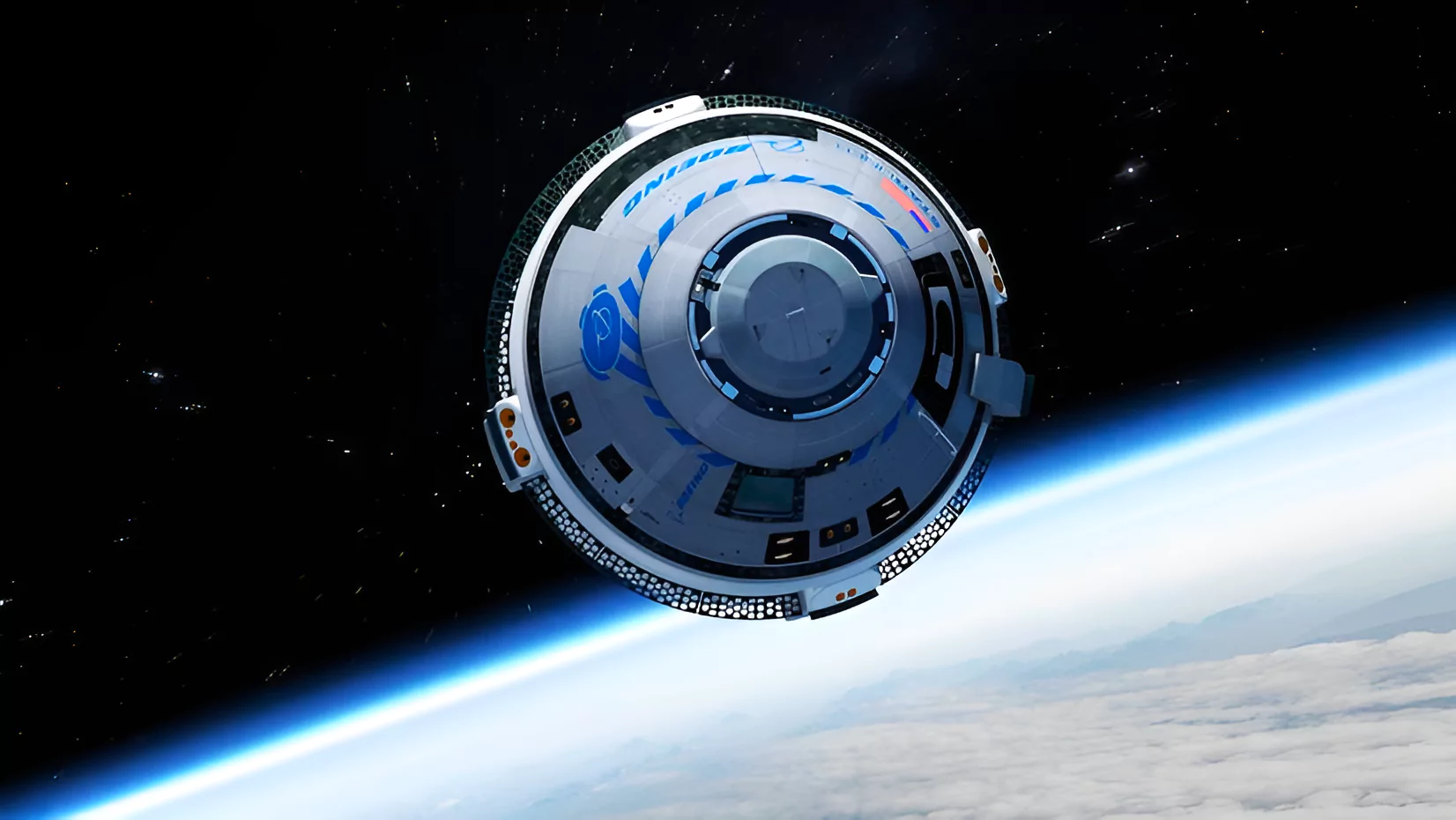
Under NASA’s Commercial Crew Program, this mission seeks to conduct a thorough assessment of the spacecraft’s functionalities, spanning from launch to docking, and culminating in its return to Earth in the western United States.
International Space StationIt is a multi-nation construction project and its main construction was completed between 1998 and 2011. According to the European Space Agency (ESA), it is a co-operative programme between Europe, United States, Russia, Canada, and Japan.
|
|---|
Sunita Williams was born in Euclid, Ohio, to Indian-American neuroanatomist Deepak Pandya and Slovene-American Ursuline Bonnie (Zalokar) Pandya.
 Expeditions 14/15: She was launched with the STS-116 crew on December 9, 2006, and connected with the International Space Station on December 11, 2006, during her maiden spaceflight, Expedition 14/15.
Expeditions 14/15: She was launched with the STS-116 crew on December 9, 2006, and connected with the International Space Station on December 11, 2006, during her maiden spaceflight, Expedition 14/15.
| Must Read | |
| NCERT Notes For UPSC | UPSC Daily Current Affairs |
| UPSC Blogs | UPSC Daily Editorials |
| Daily Current Affairs Quiz | Daily Main Answer Writing |
| UPSC Mains Previous Year Papers | UPSC Test Series 2024 |
Recently, In election season, India is debating fundamental constitutional questions around Religion based Reservation in particular questioning around Muslim Quota.
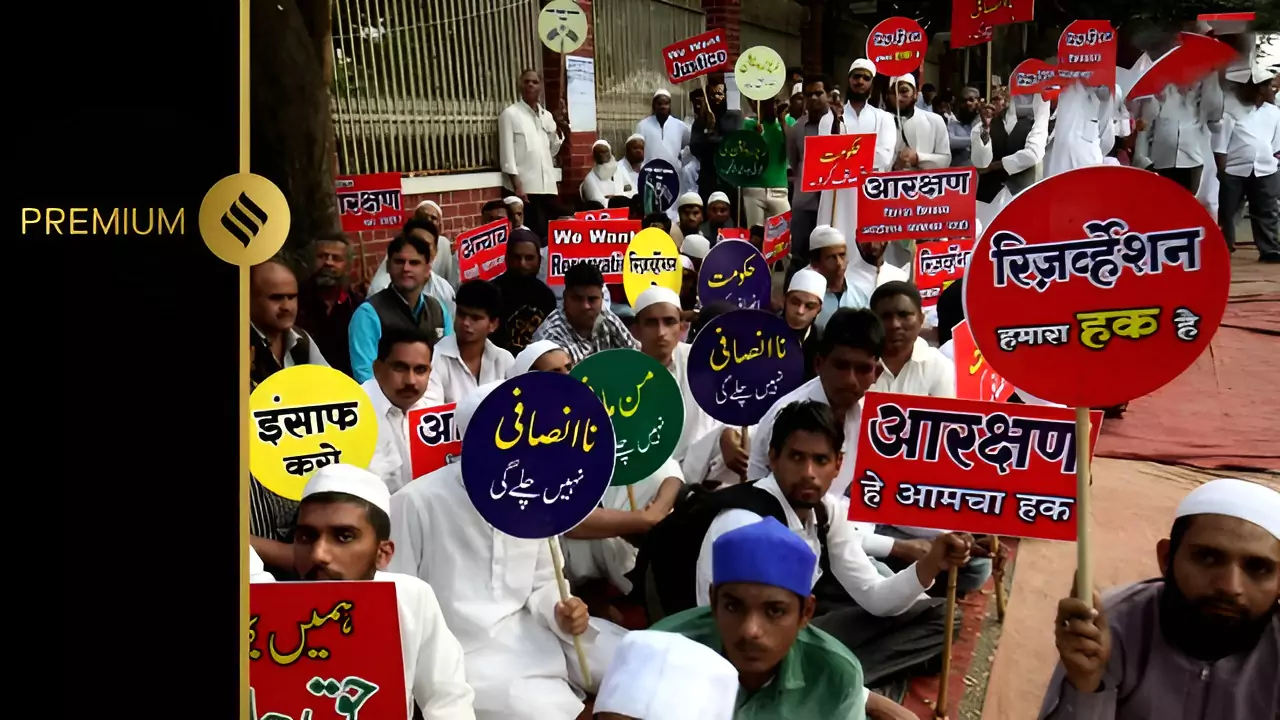
Formal equality :
Substantive equality :
|
|---|
Some Muslim castes were given reservation not because they were Muslims, but because these castes were included within the backward class, and reservation was given without reducing the quota for SCs, STs, and OBCs by creating a sub-quota within the OBCs.
Some other Supreme Court Ruling on Reservation Based on Religion
Committee Recommendations and Executive Orders
|
|---|
While religion based reservations may have potential benefits in addressing socio-economic disparities among religious minorities, they also pose significant challenges to social harmony, constitutional values, and the holistic addressing of socio-economic inequalities.
| Must Read | |
| NCERT Notes For UPSC | UPSC Daily Current Affairs |
| UPSC Blogs | UPSC Daily Editorials |
| Daily Current Affairs Quiz | Daily Main Answer Writing |
| UPSC Mains Previous Year Papers | UPSC Test Series 2024 |
The ICAR-Central Marine Fisheries Research Institute (CMFRI) found that coral reefs in the Lakshadweep Sea have undergone severe bleaching due to prolonged marine heatwaves since October 2023.
International Coral Reef Initiative (ICRI)About: It is a global partnership between Nations and organizations striving to preserve coral reefs and related ecosystems around the world. Founded: It was founded in 1994 by eight governments, namely Australia, France, Japan, Jamaica, the Philippines, Sweden, the United Kingdom, and the United States of America. It was announced at the First Conference of the Parties of the Convention on Biological Diversity in December 1994. Membership: ICRI now counts over 100 members including India. |
|---|
Corals are sessile animals, i.e. they permanently attach themselves to the ocean floor. They are formed when thousands of polyps living together in a coral colony secrete calcium carbonate exoskeleton beneath it. Over time, the skeletons of many coral colonies add up to build the structure of a coral reef. An individual coral is known as a polyp. A polyp is a sac-like animal,excretes an exoskeleton near the base. Polyps form a symbiotic relationship with plant-like cells called zooxanthellae (unicellular dinoflagellates).
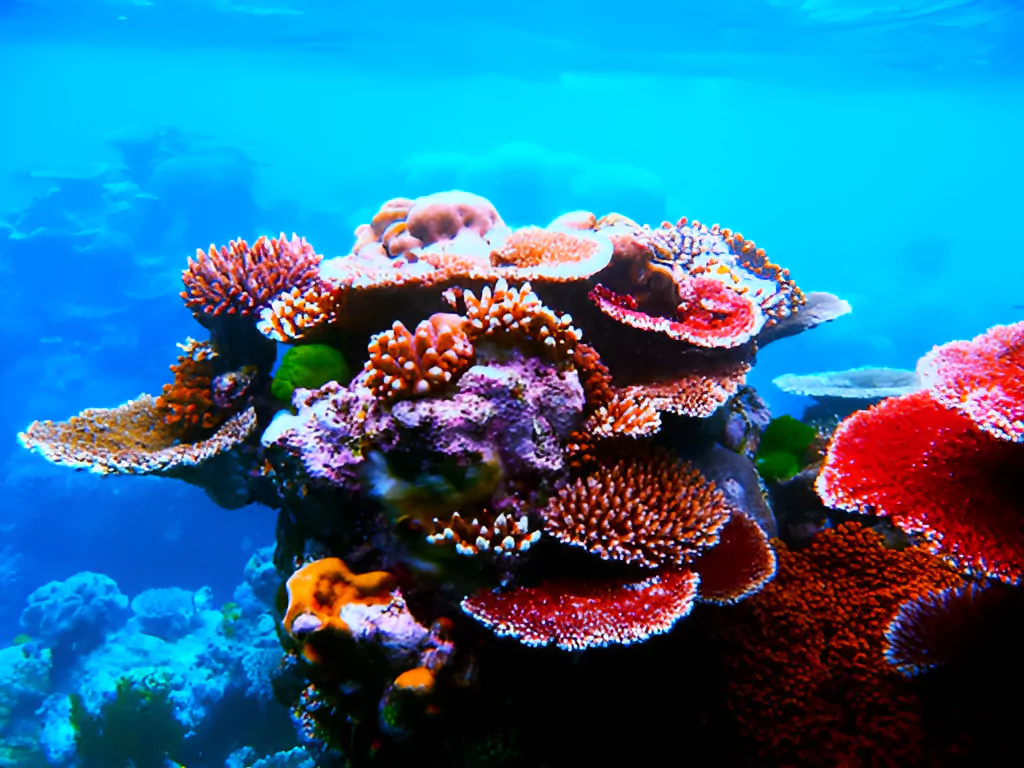
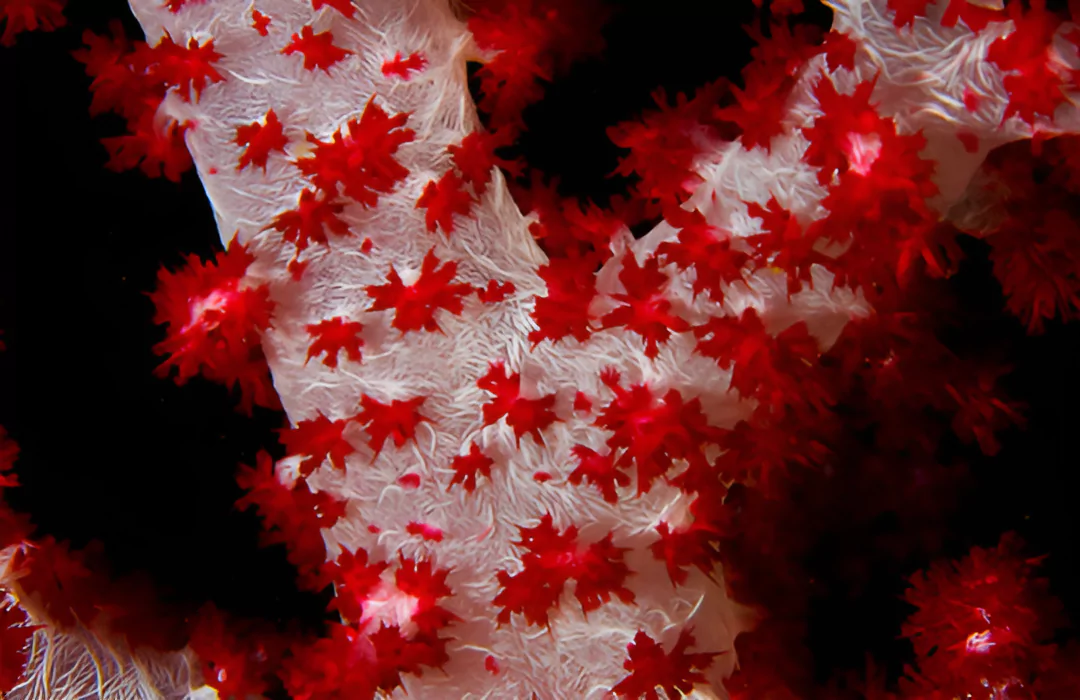 Instead, they grow wood-like cores and fleshy rinds for protection. Like hard corals, they tend to live in colonies.
Instead, they grow wood-like cores and fleshy rinds for protection. Like hard corals, they tend to live in colonies.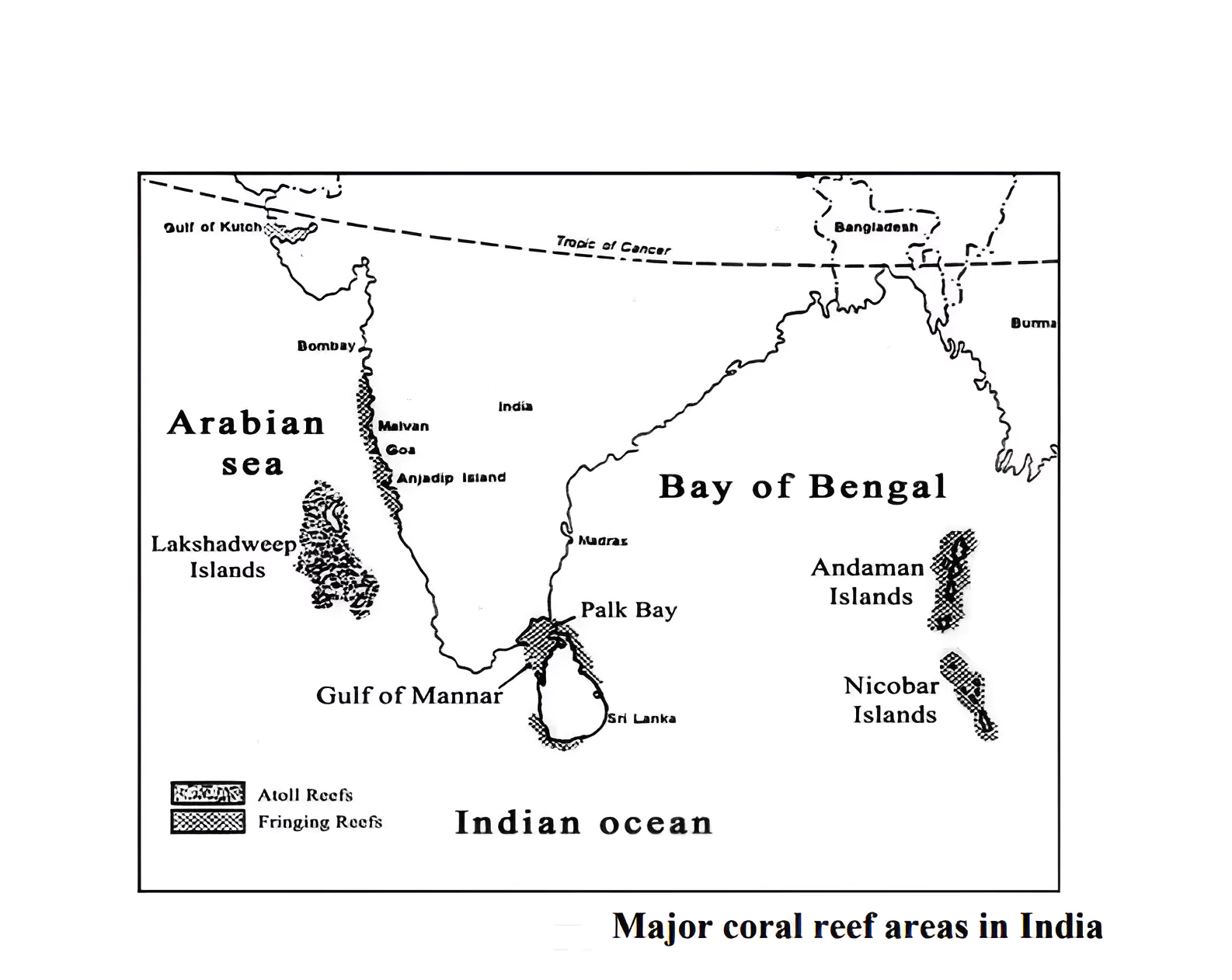 Thus, corals don’t live in areas where rivers drain fresh water into the ocean ie. estuaries.
Thus, corals don’t live in areas where rivers drain fresh water into the ocean ie. estuaries.Coral bleaching occurs when the coral Polyp expels the marine algae ie. zooxanthellae from its tissue and breaks the symbiotic relation. This result in them losing their color and source of nutrients and energy with coral’s bright white skeleton is revealed.Bleached corals are not dead, but run the risk of starvation and disease. According to experts, without their algae, corals can survive for about two weeks.
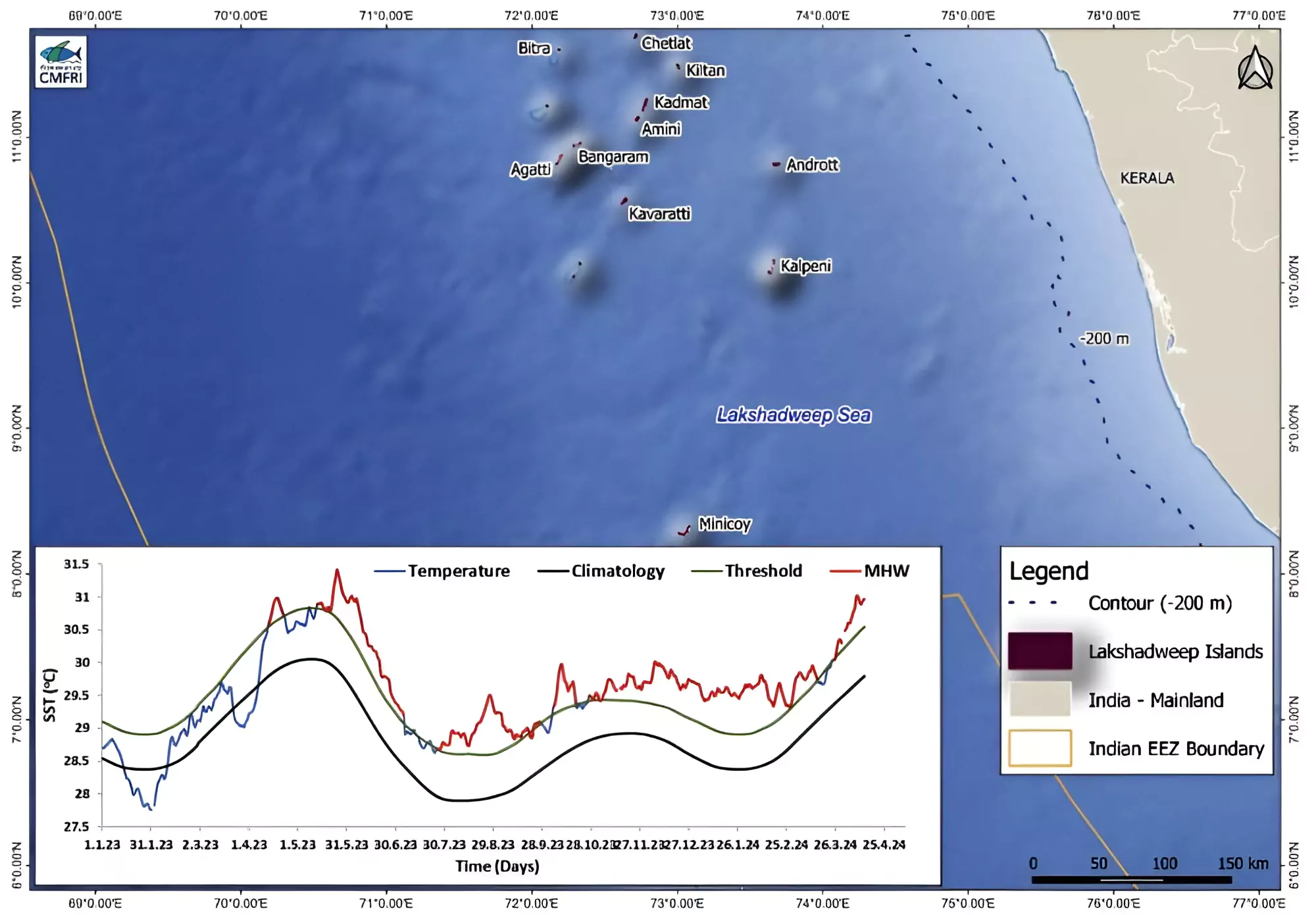
| Marine Heatwave: It is a period of unusually high ocean temperatures and is defined by its duration and intensity.
It occurs when the surface temperature of a particular region of the sea rises to 3 or 4 degree Celsius above the average temperature for at least five days. Degree Heating Week (DHW) Indicator:
|
|---|
| Must Read | |
| NCERT Notes For UPSC | UPSC Daily Current Affairs |
| UPSC Blogs | UPSC Daily Editorials |
| Daily Current Affairs Quiz | Daily Main Answer Writing |
| UPSC Mains Previous Year Papers | UPSC Test Series 2024 |
The U.S. State Department in its factsheet accused Russia of having used chemical weapons against Ukrainian forces which is a gross violation of the Chemical Weapons Convention.

Chemical Weapons Convention (CWC)
|
|---|
| Must Read | |
| NCERT Notes For UPSC | UPSC Daily Current Affairs |
| UPSC Blogs | UPSC Daily Editorials |
| Daily Current Affairs Quiz | Daily Main Answer Writing |
| UPSC Mains Previous Year Papers | UPSC Test Series 2024 |
On May 7, Boeing’s Starliner spaceship will launch two NASA astronauts from the Kennedy Space Center in Cape Canaveral, Florida to the International Space Station.
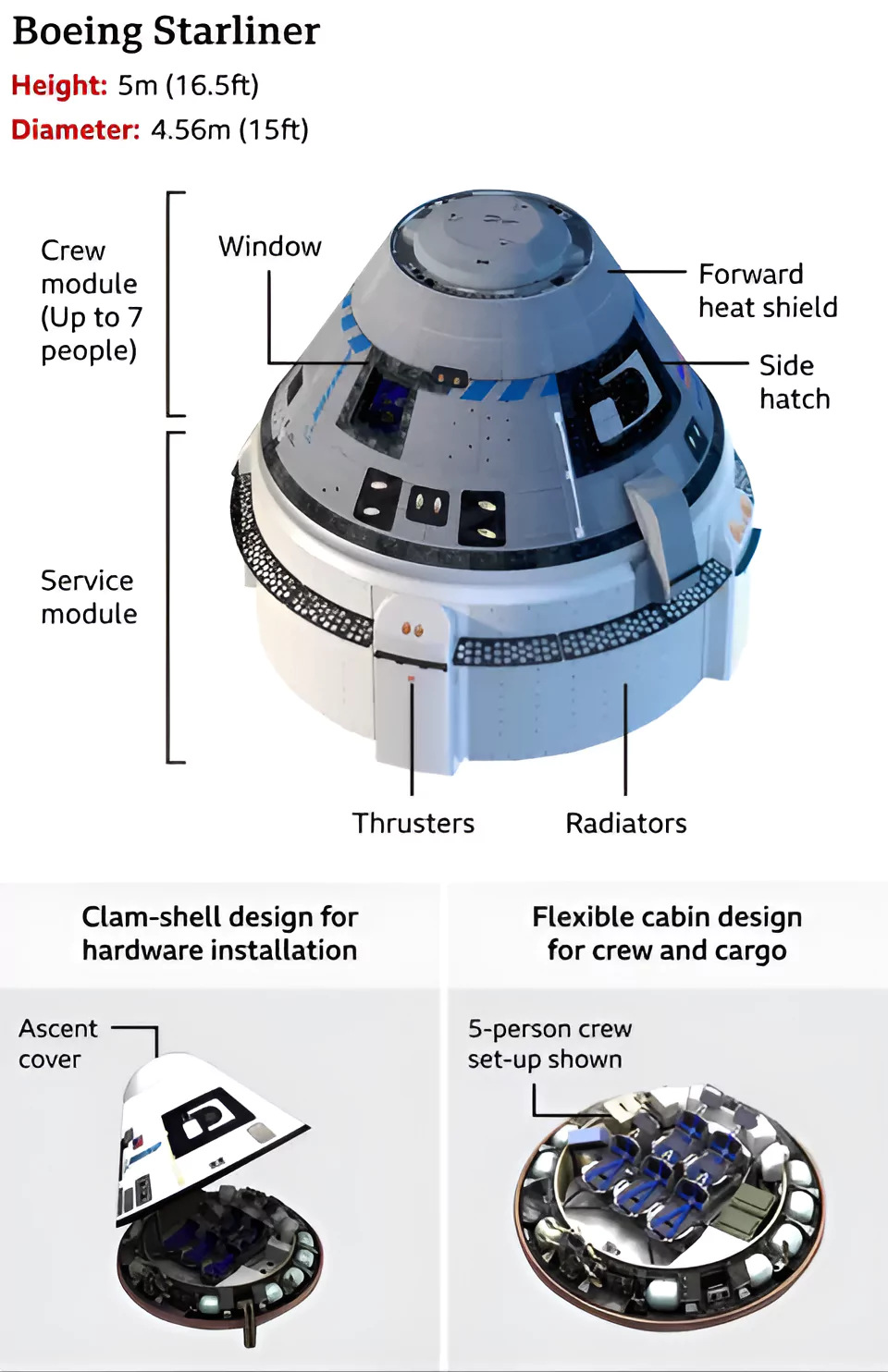
| Must Read | |
| NCERT Notes For UPSC | UPSC Daily Current Affairs |
| UPSC Blogs | UPSC Daily Editorials |
| Daily Current Affairs Quiz | Daily Main Answer Writing |
| UPSC Mains Previous Year Papers | UPSC Test Series 2024 |
Magnetic resonance imaging (MRI) stands as a crucial method to look inside the human body without surgery.
Hydrogen Atom Imaging: An MRI procedure reveals an image of a body part using the hydrogen atoms in that part. A hydrogen atom is simply one proton with one electron around it. These atoms are all spinning, with axes pointing in random directions. Hydrogen atoms are abundant in fat and water, which are present almost throughout the body.
| Difference Between MRI Scan and CT Scan: CT scans take a fast series of X-ray pictures, which are put together to create images of the area that was scanned. An MRI uses strong magnetic fields to take pictures of the inside of the body. |
|---|
| Must Read | |
| NCERT Notes For UPSC | UPSC Daily Current Affairs |
| UPSC Blogs | UPSC Daily Editorials |
| Daily Current Affairs Quiz | Daily Main Answer Writing |
| UPSC Mains Previous Year Papers | UPSC Test Series 2024 |
A paradox is emerging in contemporary Indian Foreign Policy. While India’s global power is rising, its influence in the South Asian region is declining.
Factors of India’s Global Rise: India’s global rise stems from the growth in absolute power and the geopolitical choices made by the leading powers of the contemporary international system.
Indo Pacific Region
The term “Indo Pacific region” gained prominence recently and refers to a geopolitical concept that surrounds a vast maritime area in the Indian Ocean and Pacific Ocean.
India’s Initiatives to Shape the Indo Pacific Region:
|
India’s regional decline is a product of the dynamics of comparative power, and geopolitical choices made by the region’s smaller powers.
India’s Global Paradox: Regional Decline, Global RiseFactors that have led to the decline of Indian influence in the region are also the reasons behind India’s global prominence;
Implications of this paradox for India:
South Asian Region:
India’s Principles on Foreign Policies:
|
| Must Read | |
| NCERT Notes For UPSC | UPSC Daily Current Affairs |
| UPSC Blogs | UPSC Daily Editorials |
| Daily Current Affairs Quiz | Daily Main Answer Writing |
| UPSC Mains Previous Year Papers | UPSC Test Series 2024 |
SC Verdict on Newsclick Shows Adherence to Due Pro...
Stay Invested: On Chabahar and India-Iran Relation...
Credit Rating Agencies, Impact on India’s De...
Catapulting Indian Biopharma Industry
Globalisation Under Threat, US Import Tariffs Have...
Global Report on Hypertension, Global Insights and...
<div class="new-fform">
</div>
